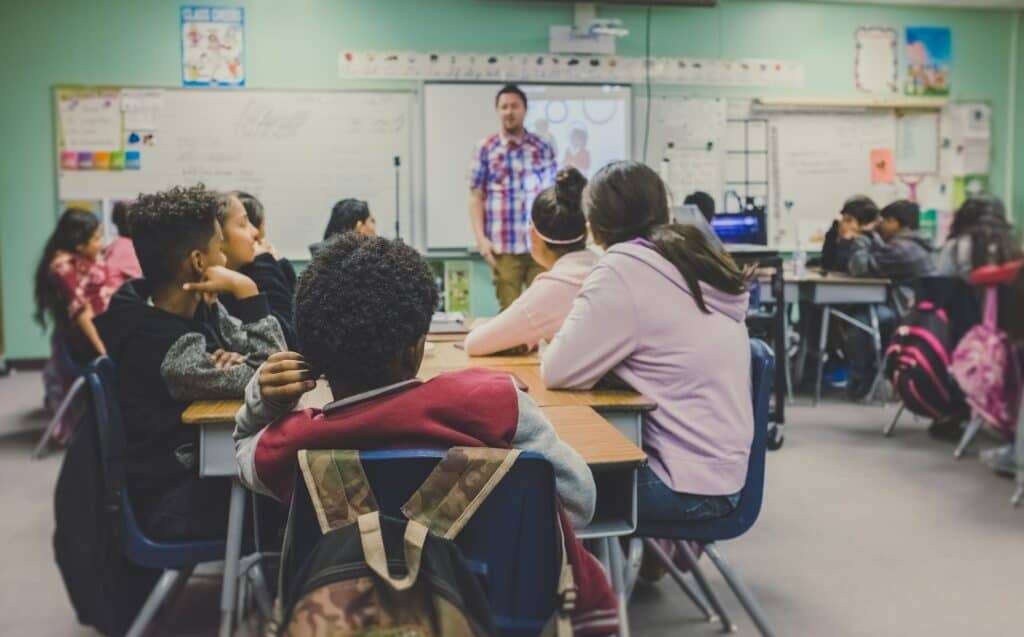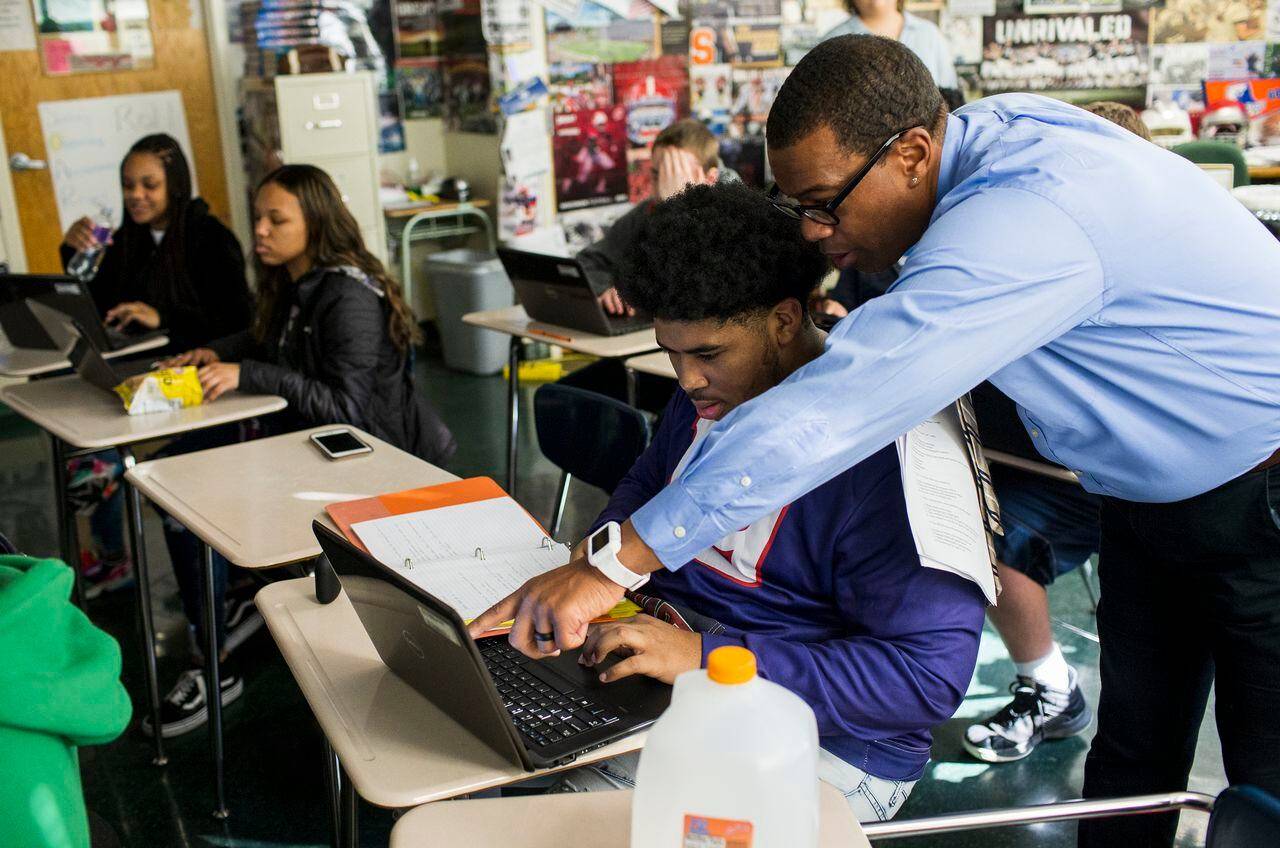Improving your teaching skills as a high school teacher is crucial for fostering a positive and effective learning environment. In this guide, you’ll discover practical insights to succeed in the classroom.
We’ll focus on essential techniques and best practices that can elevate your teaching game, ultimately benefiting both you and your students. Let’s dive right in.

Benefits of Being a Better High School Teacher
By enhancing your effectiveness in the classroom, you can potentially increase your earning potential.
More effective teaching can lead to improved student outcomes, which may reflect positively on your performance evaluations and potentially result in salary increases or bonuses.
Additionally, your investment in professional development and refining your teaching techniques can lead to long-term monetary benefits as you become a more sought-after and respected educator.
Moreover, creating a positive and engaging learning environment can contribute to better student attendance rates, which can impact school funding and potentially benefit your school financially.
Effective Classroom Management
Considering this upon learning of vacancies in secondary schools is essential for creating a conducive learning environment. Here’s a concise guide on how to achieve it:
- Establish Clear Expectations: From day one, communicate your expectations for behavior, rules, and academic standards to your students. Make sure they understand the consequences of both positive and negative actions.
- Consistent Rules and Consequences: Enforce rules consistently and ensure that consequences for breaking them are fair and predictable. Students should know what to expect if they misbehave.
- Positive Reinforcement: Recognize and reward good behavior. Praise and incentives can motivate students to behave appropriately and engage in learning.
- Engaging Lesson Plans: Plan engaging and relevant lessons that capture students’ interest and keep them focused on learning. Boredom often leads to disruptive behavior.
- Proactive Management: Anticipate potential issues and be proactive in addressing them. Circulate around the classroom to monitor and redirect behavior before it escalates.
- Classroom Layout: Organize your classroom to minimize distractions and allow for easy movement. Ensure that students can see the board and interact with each other.
- Respect and Empathy: Treat students with respect and show empathy towards their individual needs and concerns. A supportive teacher-student relationship can prevent conflicts.
Engaging Teaching Methods
Engaging teaching methods are essential in a secondary teacher position.
They foster a positive learning environment, motivate students, improve retention, and equip them with the skills needed for success in both academic and real-world settings.
- Active Learning: Involve students in the learning process with group discussions, problem-solving activities, debates, and hands-on projects. Active learning keeps students engaged by making them active contributors to the learning experience.
- Flipped Classroom: In a flipped classroom, students review instructional materials, such as videos or readings, at home and then use class time for interactive discussions, problem-solving, and application of knowledge. This approach maximizes classroom engagement.
- Project-Based Learning (PBL): PBL involves assigning students real-world projects that require research, critical thinking, and problem-solving. It allows students to apply what they’ve learned in a meaningful context, fostering engagement and deeper understanding.
- Gamification: Incorporate elements of game design, such as rewards, challenges, and competition, into lessons. Gamification can make learning fun and motivate students to actively participate in activities and assessments.
- Inquiry-Based Learning: Encourage students to ask questions, explore topics, and discover answers through guided inquiry. This method promotes curiosity and engagement as students take ownership of their learning.
- Socratic Method: Engage students in critical thinking by asking open-ended questions and promoting discussion. This method encourages students to analyze and synthesize information, leading to deeper understanding.
- Individualized Instruction: Tailor lessons to meet the unique needs and interests of each student. Provide opportunities for students to choose topics or projects that align with their passions, creating a more engaging and personalized learning experience.
- Technology Integration: Use technology to enhance learning experiences. This can include interactive simulations, online research, educational apps, and multimedia presentations.
Time Management
Time management is essential for high school teachers because it allows them to maximize their productivity, maintain a balanced workload, and provide effective education to their students.
Effective time management involves setting priorities, allocating time to different tasks, and maintaining a schedule that ensures all necessary activities are completed efficiently.
By practicing effective time management, high school teachers can create a more organized, productive, and fulfilling teaching experience, leading to improved outcomes for both themselves and their students.

Building Positive Relationships
Building positive relationships is essential in being a high school teacher because it fosters a supportive and conducive learning environment and promotes student success.
These relationships must be built on trust, respect, and comprehension. When students feel valued and respected by their teachers, they are more likely to actively engage in class activities and discussions.
Positive relationships allow teachers to mentor and guide students in their academic and personal growth, helping them navigate challenges and make informed decisions.
To build positive relationships in secondary jobs for teachers, you can:
- Show Empathy: Understand and acknowledge students’ emotions and experiences. Show compassion and support when they face difficulties.
- Be Approachable: Maintain an approachable demeanor and encourage students to reach out with questions or concerns.
- Active Listening: Pay attention to what students say and ask. Show genuine interest in their thoughts and ideas.
- Respect Individuality: Recognize and respect the unique qualities, backgrounds, and perspectives of each student.
- Consistency and Fairness: Be consistent and fair in enforcing classroom rules and consequences. Students appreciate predictability and fairness.
- Celebrate Achievements: Recognize and celebrate students’ successes, both big and small, to boost their confidence and motivation.
- Personal Connection: Share aspects of your own experiences and interests when appropriate to establish a personal connection with students.
Professional Development for High School Teachers
Professional development in teaching high schoolers is crucial for staying current with educational trends, enhancing teaching skills, and continuously improving their practice.
Some of these opportunities include:
- Workshops and Seminars: Attend workshops and seminars related to your subject area, high school teaching strategies, classroom management, and educational technology.
- Conferences: Participate in education conferences at local, national, or international levels to learn from experts, network with other educators, and gain insights into innovative teaching practices.
- Online Courses and Webinars: Enroll in online courses or webinars to explore new teaching methods, technology integration, or specialized topics in education.
- Professional Associations: Join professional teaching associations relevant to your subject or grade level. They give resources, publications, and networking opportunities.
- Graduate Programs: Pursue advanced degrees or certifications in education to deepen your subject knowledge and teaching expertise.
- Peer Observations: Collaborate with colleagues and engage in peer observations to learn from each other’s teaching methods and strategies.
- Educational Conventions: Attend educational conventions where you can explore educational resources, tools, and teaching materials.
- Book Clubs: Join or initiate book clubs focused on educational literature to discuss and apply new ideas in the classroom.
- Teacher Workshops at Universities: Many universities offer workshops and courses specifically designed for K-12 educators to enhance their skills and knowledge.
Conclusion
Improving as a high school teacher involves a combination of effective strategies, ongoing learning, and a commitment to creating a positive and engaging learning environment for students.













